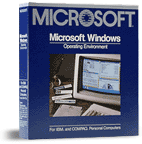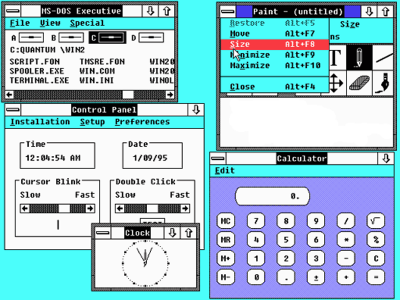Г. В. Царева
 Скачать 1.52 Mb. Скачать 1.52 Mb.
|
|
|
| A | B |
| Database | - a set of systems programs which allow the data from a database to be used by a number of different application programs |
| Database program | - a file of structured data |
| Database management system | - an application program used to store, organize and retrieve a large collection of data |
What else do you know about databases and their basic features? Which tasks can be performed by using a database? Make a list of possible applications.
3. Read about Windows operating system.
M
 any longtime PC users trace the Microsoft Windows® operating system to the 1990 release of Windows 3.0, the first widely popular version of Windows and the first version of Windows many PC users ever tried. However, Microsoft initially announced the Windows product seven years earlier and released the first version in 1985.
any longtime PC users trace the Microsoft Windows® operating system to the 1990 release of Windows 3.0, the first widely popular version of Windows and the first version of Windows many PC users ever tried. However, Microsoft initially announced the Windows product seven years earlier and released the first version in 1985. | The Windows 1. The Windows 1.0 product box featured the operating system's new, tiled windows and graphical user interface (GUI). |
1985: Windows 1.0
The first version of Windows provided a new software environment for developing and running applications that use bitmap displays and mouse pointing devices. Before Windows, PC users relied on the MS-DOS® method of typing commands at the C prompt (C:\). With Windows, users moved a mouse to point and click their way through tasks, such as starting applications.
In addition, Windows users could switch among several concurrently running applications. The product included a set of desktop applications, including the MS-DOS file management program, a calendar, card file, notepad, calculator, clock, and telecommunications programs, which helped users manage day-to-day activities.
T
 his early Interface Manager product preceded the Windows 1.0 GUI.
his early Interface Manager product preceded the Windows 1.0 GUI.1987: Windows 2.0
Windows 2.0 took advantage of the improved processing speed of the Intel 286 processor, expanded memory, and inter-application communication capabilities made possible through Dynamic Data Exchange (DDE). With improved graphics support, users could now overlap windows, control screen layout, and use keyboard combinations to move rapidly through Windows operations. Many developers wrote their first Windows-based applications for this release.
1990: Windows 3.0
The third major release of the Windows platform from Microsoft offered improved performance, advanced graphics with 16 colors, and full support of the more powerful Intel 386 processor. A new wave of 386 PCs helped drive the popularity of Windows 3.0, which offered a wide range of useful features and capabilities, including:
Program Manager, File Manager and Print Manager.
A completely rewritten application development environment.
An improved set of Windows icons.

